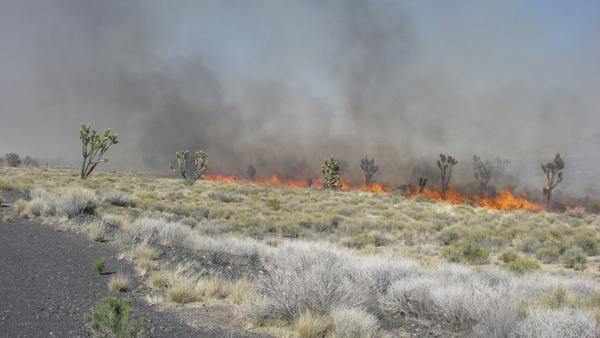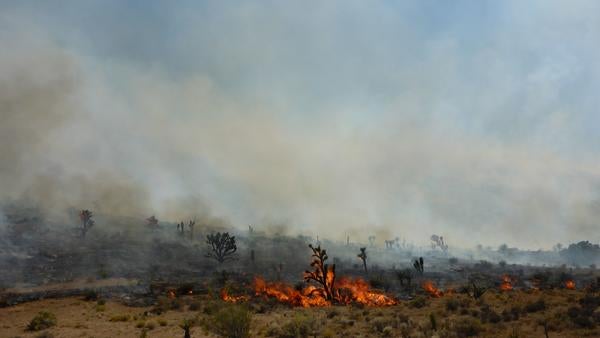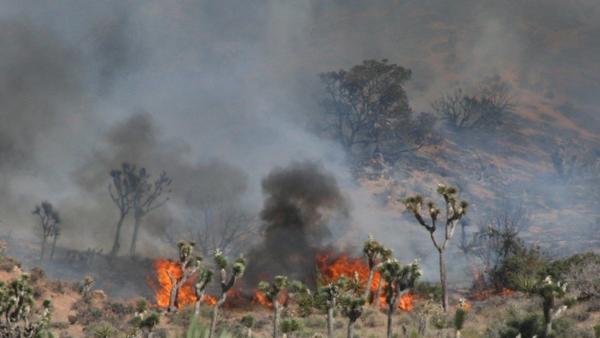The Season for Wildfires
As is increasingly becoming the norm, summer in western North America is the season for wildfire. I’ve touched on wildfire in a couple of these essays already, but the plethora of fires over the past two weeks has provided fodder for yet another go at this topic.
You may have seen the headlines last week related to a social media post from the Sempervirens Fund, a non-profit organization dedicated to the protection of California coastal redwood trees, Sequoia sempervirens.
The post went like this: "We are devastated to report that Big Basin State Park, as we have known it, loved it, and cherished it for generations, is gone."
That is a powerful statement. The problem is that redwoods, like most of the non-desert plants of this region, are adapted to surviving fire. They have thick fire-resistant bark, and can survive intense fires, sprouting new green needles within days after the smoke finally clears.
In what seems like a previous life, my wife Katie and I, while working for a different non-profit, The Nature Conservancy, managed an 8,000-acre old growth redwood forest in northern California’s Mendocino County. We were told it was the largest unlogged forest left in that region.
We lived in a cabin in those woods for nearly six years, during which we developed a personal relationship with almost every redwood tree living there. I would wager that none of those 10-foot to +25-foot diameter, 2,000-year-old behemoths lacked fire scars. Sometimes the scars would encompass almost half the tree, sometimes so much of the tree had been burned that there was a room-sized cavity undercutting the tree, and sometimes the entire tree was gone, but its historical presence was defined by a near perfect circle of “small," 6-foot diameter redwoods that were sprouts from the roots of their “mother." If you are going to live for 2,000 years you should expect (and so be adapted for) fire. Perhaps never was there a more apt species name, sempervirens, meaning always living. Short of ripping it out of the ground, it may not be possible to kill a coast redwood. Certainly, those fire scars are a testimony that fires won’t kill them.
As we’ve discussed before, fire is an important, positive ecosystem process in almost all the non-desert regions of the west, until it's not. Wildfire comes in many different flavors, from the careful, almost surgical approach of the indigenous people once living here, to the near catastrophic dimensions we seem to be seeing more and more. Root-sprouting coastal redwoods are able to survive it all. Many oak and manzanita species that also are capable of root sprouting after fires are doing just fine as well. The problem then is for those trees and shrubs that are not root sprouters. Pines, firs, and spruces don’t root sprout. Joshua trees root sprout sometimes, but not if the fire is too intense. What we are seeing is that these non-root sprouters are disappearing from landscapes that are experiencing catastrophic fires.
Fires have always been part of these forests and shrublands, but there is a new factor, the heating and drying effects of climate change. This is resulting in hotter, larger fires, so seed sources for re-establishing non-root sprouters are too far away for them to reach much of the fire’s footprint. Importantly, even if the seeds get there, it is now too dry for seeds to sprout and for seedlings to survive.
I’ve mentioned the Mountain Fire that burned up (among other areas) the Spitler Peak trail in 2013. Before the fire I recorded a dense forest of Jeffery, sugar, and Coulter pines, white fir, and incense cedar, with an understory of root-sprouting black and canyon live oaks. Seven years after the fire, the oaks are thriving. But, except for a small handful of Coulter pines, all the conifers are gone. No seedlings. This is exactly what ecologists are predicting for western forests, conifer-dominated forests being replaced by oaks. Oak forests are beautiful, but that Spitler forest now lacks pygmy nuthatches and mountain chickadees.
For desert fires, like the Dome fire that burned 43,000 acres in the Mojave Desert Preserve last week, the impacts will likely be even more dramatic. If the Joshua trees and other desert shrubs are not able to root-sprout, there will be a cascade of reduced species richness and diversity.
Cooler days are ahead.



